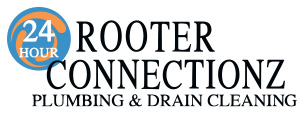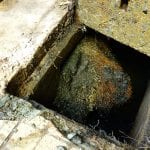The main sewer line of any home is one of the most important plumbing locations on that property, and it may be exposed to a few unique threats or risks due to its placement underground in your front or back yard. One such potential threat that you at least have some degree of control over: Tree roots that may infiltrate your sewer line from nearby trees on the property, causing damage, leaks and related issues.
At 24 Hour Rooter Connectionz Plumbing & Drain Cleaning, we’re happy to help with a variety of main sewer line repair services, including for issues where tree or plant roots have impacted your line. Why is this a potential issue for many homeowners depending on the location of trees or plants in your yard, and what can you do to take precautions and ensure this issue isn’t a risk for your main water line? Here are some of the key factors you should be aware of and keeping an eye on as a home or property owner, including a note on which trees tend to have the most invasive root systems.
Tree Root Growth and Main Sewer Line
First and foremost, for those who are unfamiliar with this realm altogether, a quick word on how this issue takes place. Most of us are well aware that trees and plants have root systems below the earth, but some don’t realize how extensive these can be – especially for many tree species.
Tree roots can extend dozens of feet in any direction below their hosts, and they’re capable of sensing where water is located. As such, if they’re planted close to your main sewer line, they may grow toward it in search of the water that’s inside it – and in some cases, may even grow into the pipe itself, cracking or completely damaging the pipe’s exterior in the process. If this happens, this becomes one of the most expensive plumbing repairs out there. Rather than deal with this issue, take some basic precautions involving the trees and plants in your yard and your main sewer line.
Pipe Location and Space
The first basic precaution to take here is finding out and noting where your main sewer line sits within the yard, plus the location of any other pipes or plumbing systems. In many cases, this information can be obtained simply by calling the national 811 “Call Before You Dig” number that helps you find the location of underground utilities. If this is not the case, contact our team for assistance. Our plumbers will be able to easily identify the location of your main sewer line and any other underground pipes in your yard.
Once you know this location, take some time to measure the distance from the pipe to any major trees or plants in the area. Trees should have 20 to 30 feet of space between them and the location where any major pipes are, especially if they’re known to have expansive root systems. In addition, such trees should also be placed at least this far away from the home foundation, as tree roots can also damage this expensive home element.
Water and Nutrients
Another big theme here to avoid any infiltration of your sewer or pipes from roots: Ensuring the roots have the proper water and nutrients to begin with, which will make them less likely to reach out and invade other areas.
For whichever trees or plants you have in your yard, you should be doing research on the proper nutrients and watering quantities they require – and then meeting these needs regularly. In addition, if you’re planting any new trees or shrubs, we recommend going for options that don’t have extensive root systems (in a moment we’ll go over some of the tree types that have the most extensive roots).
Maintenance and Prevention Themes
Also vita here is maintenance of the actual sewer line itself, which should be done regularly through basic inspection and any required cleaning or other services. If you leave your main sewer line without any services for several years, for instance, it may develop cracks or leaks on its own – and these, in turn, will expose more water, nutrients and oxygen to the soil, which will attract nearby tree roots.
For some, prevention of sewer line issues is important enough to take proactive action. The main tool at your disposal here is a root growth barrier, which involves slow-release chemicals that keep roots away from the sewer line area. There are also simple physical barriers that do not involve any chemicals for this purpose. We often recommend these kinds of prevention techniques to clients who have had previous root growth issues into their pipes or other parts of their system, as this signals aggressive roots that should be controlled in some manner.
Trees to Avoid
As we noted above, we strongly recommend avoiding aggressive root systems if you’re planning new trees anywhere in the vicinity of your main sewer line or other plumbing pipes. There are many tree varieties out there that have relatively limited roots, or even those whose roots primarily grow horizontally rather than vertically and will not be as great a risk to your system.
On the flip side, there are a few trees we recommend avoiding for this purpose: Willows, maple, elm and poplar trees chief among them. If you already have one of these trees on your property, we advise great care and regular inspection of your sewer line (we offer video inspections if you need one) – if not, you should look in another direction for your new trees if you’ve had sewer line issues in the past or are worried about them moving forward.
For more on avoiding tree root infiltration into your main sewer line, or to learn about any of our drain cleaning, sewer line repair or emergency plumbing services, speak to the plumbers at 24 Hour Rooter Connectionz Plumbing & Drain Cleaning today.


